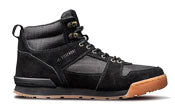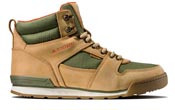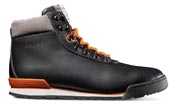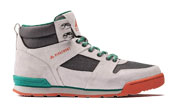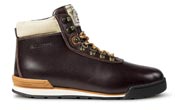How to catch a fish without a rod
Having to find your own food in the wild can be part of the excitement and adventure of hiking and camping. But catching a fish for the fun, and doing it because you have nothing else to eat are going to be very different experiences.
Knowing how to improvise so you can catch fish for your supper can be useful whether you are in a survival situation or not. After all, do you want to carry a rod and line with you everywhere you go? Thought not!
Here are some ideas about how you can net yourself some fish – whether it’s for the heck of it or because the ants got to your packed lunch before you did!
Make your own fishing line
- Look for any item in your pack that can be made into a hook and twist the item into a hook shape. These can work:
- Safety Pins
- Paperclips
- Broken soda can tops
- Sharp Twigs
- Bobby pins
- Earrings (only cheap ones, though!)
- Attach "hook" to a line. Things that make good improvised lines include:
- Shoelaces
- Unravelled thread from clothing
- Twine, string or yarn
- Long strong grass, flax or seaweed stems
- Put some bait on your hook - food items or anything shiny will do. If you find some worms, that's great. Other things that can make good bait include:
- Food scraps (if you have it, meat is ideal)
- Bits of colorful plastic or torn pieces of foil
- Leaves (or torn sections of leaf)
- Dead insects
- Jewelry
- Throw your makeshift hook into water such as river, pond / lake or even the sea if you are near the coast. The best places to find fish are in shadowy areas, such as beneath overhanging parts of banks, below overhanging trees, among water plants or seaweed, or near rocks. Be patient but caste your hook into new areas if you do not get any interest from the fish. That’s it. Just wait for a fish to bite.
- Once a fish does bite, scoop it up with your hands, some kind of cup or bowl, or an improvised net made from clothing. Don’t try pulling it in just with the rod and line as either could easily break. Also, the fish can wriggle off the hook if you let it dangle for too long, or if you pull too hard.
Use a tarp
This is a variation on fishing with a net. It’s a great way of catching fish if you don’t have anything on hand that you can turn into a rod or if the water you are fishing from is shallow and still. The idea is to set your trap and wait for the fish to swim into it, then scoop them out in one swift movement.
- First, you need to make a container for trapping your fish. Good items to use include:
- Clothing (something that allows water to escape fast is ideal i.e. light knitwear
- A bucket
- A jar or some other kind of light container
- Plastic bags
- Lay your trap somewhere where you have either seen fish or think they are likely to be (under rocks, banks, in the shade of trees etc).
- Wait for a fish to swim into or over your ‘net’. Keep very still so the fish are not alarmed by your hands and so they get used to them being in the water. You need to be very patient to use this method!
- When a fish swims into your net, pull out your container or pull up your bag or fabric trap – hopefully with the fish inside it.
Cornering the fish
This method works best if there are a few people to work at it together. It also works best in shallow water where you have good footing and can see what you are doing.
- First, you will need a length of cloth so you can block and corral the fish into a small space.
- Stretch out the length of cloth between you and the other people so it forms a barrier in the water. Make sure the fish cannot escape underneath the improvised net.
- Move slowly towards the fish, backing them into a small, confined area. A bend in a river, the end of a tide pool, or a shallow beach area are all good areas to aim for.
- Once you have trapped the fish into a sufficiently small area, you need to get them out. Make sure you have two containers on hand: one for scooping them out of the water and the other for tossing them into so they do not get back into the water.
Other methods
If the fish you are hunting are big enough and you can trap them sufficiently, you can spear them with a knife or scissors or bludgeon them while they are still in the water. Fish are hard to grasp with your bare hands as they are slippery so gloves can make them easier to hold onto.
While the above hacks will help you catch a fish without a rod - there is no great adventure companion than a pair of Ridgemont Outfitters hiking boots. Shop the range here:


